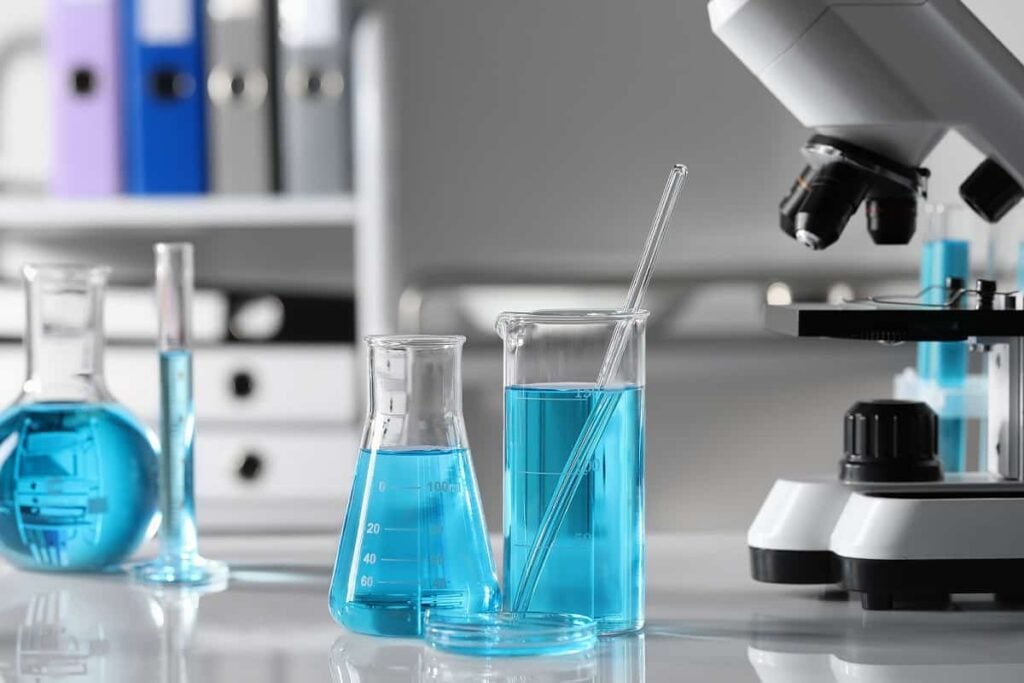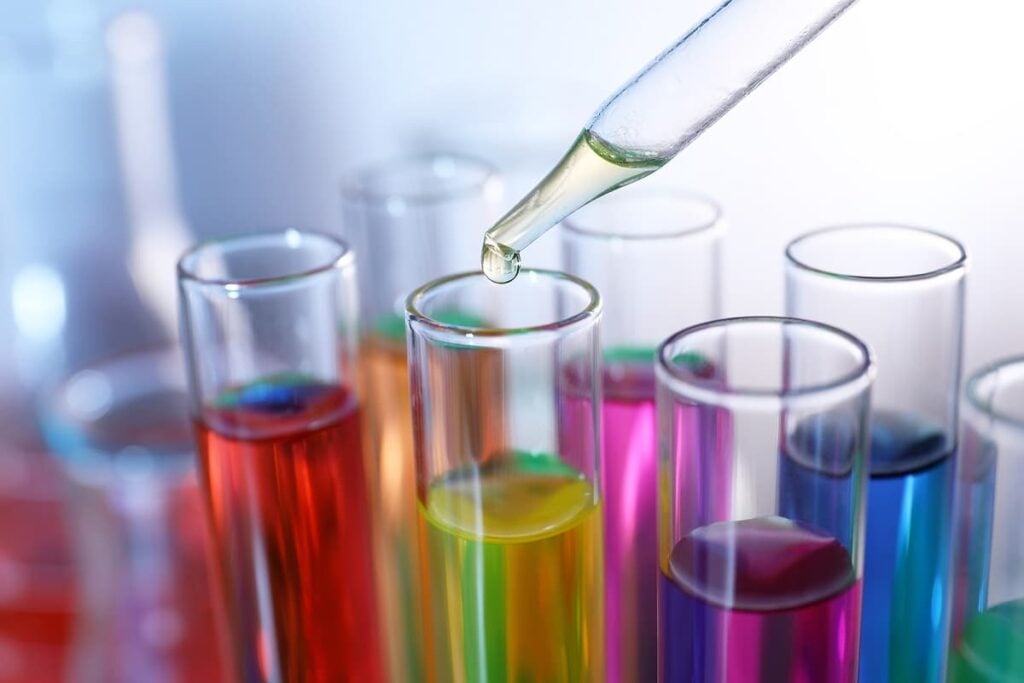Can Exscientia Stock Win the AI Drug Discovery Race?
Table of contents

One of the biggest breakthroughs in healthcare came out in 2021. No, we’re not talking about the covid vaccine. DeepMind, the UK-based AI laboratory owned by Alphabet, released the source code for AlphaFold2. This potential Nobel-winning piece of software can now predict the three-dimensional structure of nearly all proteins, the molecular machines that underpin every biological process. And it can do in days that once took scientists years to unravel.

The ability to predict protein structures will enable scientists to develop drugs that can map to these origami-like shapes with atomic accuracy. It shows the full potential of what artificial intelligence is capable of doing to advance human health. Perhaps that’s why there’s been a lot of buzz around – and lots of bucks going to – AI drug discovery companies. Earlier this year, we took another look at four publicly traded AI drug discovery companies – all of which are trading at deep discounts thanks to the downturn in tech stocks and the market in general. We decided that only one of them appeared to offer a tolerable amount of risk for our taste. But we’re constantly challenging our assumptions, and we’ve never really done a deep dive into Exscientia (EXAI), another UK-based AI company we’ve been tracking since 2019.
Let’s see if we’re missing anything from this particular story.
About Exscientia Stock
Founded 10 years ago, Exscientia describes itself as a pharmatech company with an end-to-end AI-powered platform that leverages experimental technologies for identifying potential disease targets and then designing drugs that would be the most effective and safe. It also applies AI throughout the testing and experimental phases, including patient selection for clinical trials. (We’ll unpack all that more in just a bit.) Before its October 2021 IPO, Exscientia had raised more than $374 million in disclosed funding from names like SoftBank, BlackRock, and Celgene (before it was acquired by Bristol-Myers Squibb, which is also an investor). The Bill & Melinda Gates Foundation also added some grant money to the mix.
Last year’s upsized IPO raised $350 million, along with another $160 million in private shares bought by SoftBank and the Gates Foundation, bringing in a grand total of about $510 million. Today, Exscientia stock is trading at less than half of its $22 debut, with a market cap of about $1.24 billion. The company ended the first quarter of this year with about $720 million in cash and other liquid assets. While far from profitable, Exscientia is not burning crazy amounts of cash – posting a net loss of about $20 million in Q1-2022 and just $66.5 million for all of last year after a fat tax rebate. At that rate, the company has years of life left to bring a drug to market, though the financial picture is far more complex than that – and our chief complaint about Exscientia in an earlier piece we wrote about it and other AI drug companies.
Before we revisit that argument, let’s dig into exactly what Exscientia is doing in AI drug discovery.
The Advantages of Using AI for Drug Discovery
In the company’s own words, its AI capabilities include a “wide range of deep learning and machine learning algorithms, generative methods, active learning and natural language processing.” These different methods determine which diseases to target and how to design the potential drug molecule. The platform also uses AI to analyze individual patient tissues to prioritize which drug molecules will have the best effect – a significant step toward precision medicine.

Just like with AlphaFold2, one of the big advantages is that algorithms can generate drug targets and candidates in just a fraction of the time compared to the business-as-usual approach. Indeed, Exscientia claims its platform can generate a likely drug candidate in about one year, synthesizing just a fraction of the 2,500 molecules that is the industry standard.

One oft-quoted study estimate is that it costs about $1.8 billion and takes more than a decade to develop a new drug. With a success rate of less than 5%, one can quickly see the economics of shaving years off the upfront costs, especially if automating the process can also boost the chance of success. That’s what the following rather confusing graph tries to illustrate.

Yeah, we couldn’t quite follow the math either, but you can pore over the company’s 404-page SEC filing to learn more. The bottom line: AI can generate drug candidates faster and cheaper, with less risk of failure than the lab-based iterative process mainly used today. As we’ll discuss next, some big names are big believers in the technology.
The Exscientia AI Drug Discovery Pipeline
Exscientia is running full steam ahead, with more than 30 projects in the pipeline. It partners with large pharma companies, engages in joint ventures with other biotechs and pharmaceutical companies, and also runs its own programs. The majority are focused on oncology and inflammation/immunity.

The company’s most advanced drug, EXS-21546, is a cancer immunotherapy treatment that it developed in just nine months out of only 163 compounds. Exscientia claims that it is the first AI-designed drug to enter human clinical trials. The Phase 1a clinical trial began in December 2020 and initial results were released in June 2022 as promised. It didn’t kill anybody, so they’re now moving on to Phase 1b/2 to test the drug in patients with solid tumors. In a pre-clinical study, EXS-21546 compared favorably to an already-approved anti-tumor drug.

While roughly a third of the current projects are backed by big pharma, that’s pretty much where all the revenue is coming from at the moment. Partners include Bristol Myers Squibb (BMS), Sanofi, Bayer, and Evotec. Let’s take a quick look at each partnership.
- Exscientia and BMS are collaborating on eight oncology, autoimmunity, immunology, and inflammation projects that originally began with Celgene but was expanded in 2021. So far, Exscientia has collected $65 million in upfront payments, along with another $20 million in Q3-2021 after BMS opted to license an immune-modulating drug candidate. The deal is potentially worth $1.3 billion, not including potential royalties, if any of these drugs go all the way.
- For Sanofi, Exscientia initially delivered a lead drug candidate in the area of inflammation and fibrosis in 2019 for a project worth up to $250 million in preclinical, clinical, and sales milestone payments. Sanofi must have liked what it saw so far, because in January 2022 it entered into a new collaboration to discover and validate up to 15 novel targets in oncology and immunology. It also handed over $100 million in upfront payments in a deal worth up to $5.2 billion.
- Bayer is on board for three projects that will target therapeutic areas including pain, inflammation, and oncology in a deal worth up to about $250 million.
- An early investor in Exscientia, Evotec has been working with the AI drug discovery company since late 2017. It is a minority owner on the EXS-21546 project as well.
In addition, Exscientia has joint ventures (or co-owned business) with another half-dozen biotechs and pharma companies.
Financial Fuzziness
These various business models make it difficult to assess the full financial picture for Exscientia. For instance, the company often talks more about its cash flow than its revenues, but there is a difference. The former refers to the amount of cash being transferred into and out of a company and is more of an indicator of liquidity. Revenue, of course, refers to the money earned from the sale of products and services. Both are legitimate ways for investors to measure the financial health of a company, though we prefer to stick to revenues – and favor business models like software-as-a–service (SaaS) that provide reliable and consistent recurring revenue streams. You just don’t get that with Exscientia’s business model.
Last year, for example, the company had more than $85 million in cash flow from collaborations and only $9 million in net cash outflows from operations. Sounds like it barely lost a dime. But when we’re talking about actual revenues, it’s a different story: The pharmatech had about $37 million in revenue but losses of more than $75 million before taxes.

Contrast that to an AI drug discovery company like Schrödinger (SDGR) that has a business model with more consistent revenue streams. It also sports a market cap that is less than twice that of Exscientia but with $100 million more in revenue, making it more reasonably valued. Though that $100 million from Sanofi will count as revenue in Q2-2022, likely giving Exscientia its first-ever profitable quarter and putting it on pace with Schrödinger, at least for one quarter. Of course, we’re not investing in a single quarter but for the long haul. The Exscientia business model is just too fuzzy. While there is potential for some big payoffs, each milestone represents a big “if” in terms of success, especially with a platform that still remains largely unproven. Like AbCellera and Recursion (two AI drug discovery stocks we like), we want to see more traction before considering an investment.
Conclusion
Exscientia is at the vanguard of the AI drug discovery revolution. It is working with some impressive pharma companies on some potentially highly lucrative deals. Its first clinical trial offered encouraging results. Unlike many early-stage biotechs, Exscientia is pulling in meaningful revenue. But it’s very much a feast or famine business model, with the big pharma deals (and the company’s own significant war chest) financing the rest of the pipeline related to the co-owned and solo projects. While the company can save upfront time and money in the drug development process, it will still take years to find out if its AI platform can design marketable pharmaceuticals. Until then, investors will likely see their money ride the ups and downs of clinical trials, going nowhere fast.
Sign up to our newsletter to get more of our great research delivered straight to your inbox!
Nanalyze Weekly includes useful insights written by our team of underpaid MBAs, research on new disruptive technology stocks flying under the radar, and summaries of our recent research. Always 100% free.
















Interesting article in Forbes: “AI: From Drug Discovery To Robotics”.
Analytics Insights reports that robotics in pharma and drug discovery is expected to grow from a $2.05 billion industry in 2019 to $4.87 billion in 2023. Driving this investment is the need for the industry to solve the major roadblocks to successful novel drug discovery: namely, slow speed, high cost and excessive failure rates in the final stages.
—-
It would be interesting to see Nanalyze article about robotics in pharma and labs automation.
Good article by Forbes, thank you for posting! We’ve covered this topic before here: https://www.nanalyze.com/2020/11/life-sciences-laboratory-automation/
Exscientia Receives First CTA Approval to Initiate IGNITE-AI, a Phase 1/2 Trial of EXS-21546 in Patients with Advanced Solid Tumours.
Good update, thank you.
Exscientia Q3 2022: revenue of $7M (-64.3% Y/Y). Price $4.98 – at 52 week low.
52 week high: $24.99 – 1 year ago. Cash: $560M – close to market cap: $612M.
In their pipeline: there is 1 drug in Phase 1.
Yep. “Exscientia claims that it is the first AI-designed drug to enter human clinical trials.”